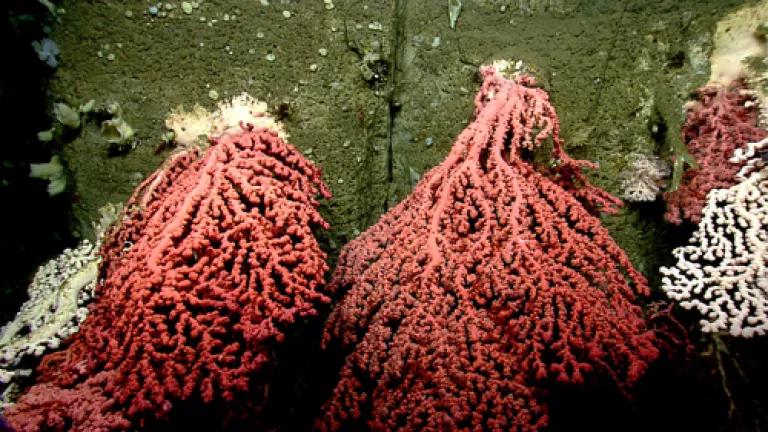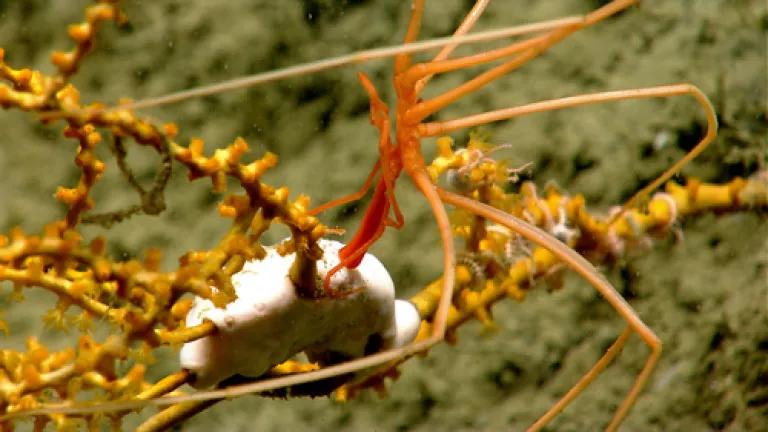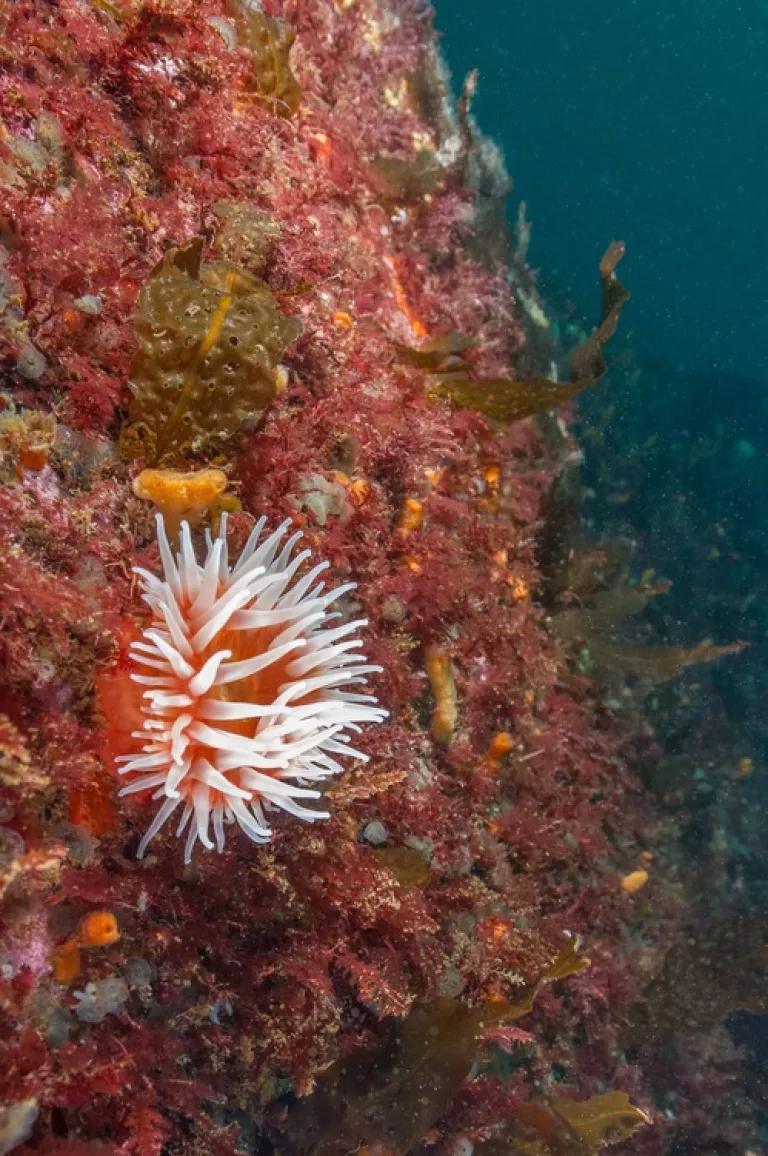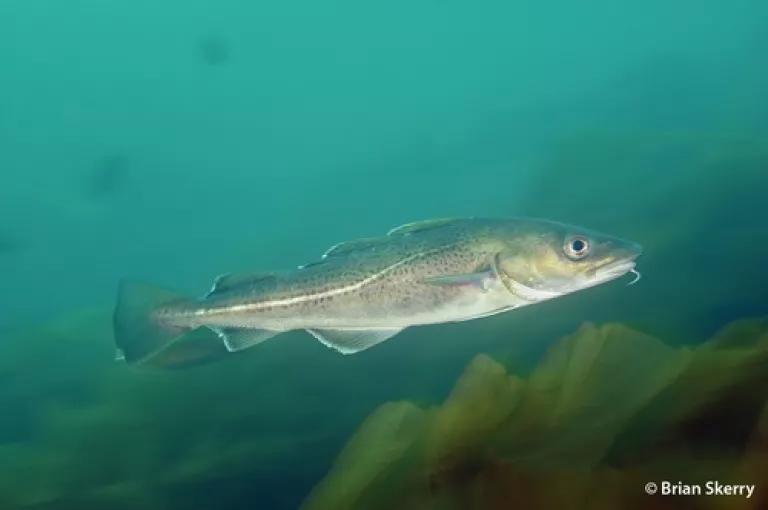
Historic news: the Obama Administration announced today that it is considering permanently protecting--presumably through designation as a national monument--a unique area of ocean waters off the coast of New England. This would be the first-ever monument in the Atlantic Ocean and first in waters anywhere off the continental United States.
Before acting, NOAA will hold a "Town Hall" meeting to gather public input. The public meeting will be held at the Providence Marriott Downtown in Providence, Rhode Island on September 15th from 6:00 to 8:00 pm. NOAA will also take written comments through September 15th through the website atlanticconservation@noaa.gov.
The announcement specifically identifies part of the New England Coral Canyons and Seamounts Area as the area under consideration for protection. The New England Coral Canyons and Seamounts Area starts around 150 miles southeast of Cape Cod and includes five dramatic underwater canyons, some deeper than the Grand Canyon, along with four underwater mountains--or "seamounts"--that rise as high as 7,000 feet above the ocean floor--higher than any mountain east of the Rockies. The canyon walls and seamount slopes are alive with vivid cold-water corals of otherworldly beauty--some the size of small trees that have grown over centuries. The waters above teem with diverse marine life, with a concentration of plankton, squid and other forage organisms providing a banquet for marine mammals, including the iconic sperm whale, seabirds, sea turtles and an array of fish.
Coral "forest" in Heezen Canyon. Photo credit: NOAA Okeanos Explorer Program, 2014 Northeast U.S.Canyons Expedition.
The notice does not specifically identify two of the canyons in this special area, Heezen and Nygren Canyons, as under consideration for protection. Nor does NOAA identify Cashes Ledge, a spectacular wildlife haven in the Gulf of Maine, that NRDC and an array of conservation, civic, business, and scientific groups, as well as political officials, have been pressing for inclusion in a New England marine national monument. This will clearly need to be a focus of the public's attention on September 15th.

Sea spider in Lydonia Canyon. Photo credit: NOAA Okeanos Explorer Program, 2014 Northeast U.S. Canyons Expedition.
Designating New England's offshore treasures as a marine national monument would bring critical protection to these areas, as it would mean a prohibition on all commercial extractive uses: a ban on commercial fishing, oil and gas drilling, deep sea bed mining, and sand and gravel mining.
NRDC has been working to protect the Atlantic Canyons and Seamounts for over a decade because of their ecological significance and vulnerability to human disturbance.
The other area that needs permanent protection as part of the marine national monument--Cashes Ledge--is about 80 miles southeast of Portland, Maine. Cashes Ledge is a unique underwater mountain range with a virtual treasure trove of marine life living among its peaks and valleys. This includes the deepest and largest cold-water kelp forest on the Atlantic seaboard. This lush kelp provides superb habitat and serves as a food source for the vast array of ocean wildlife. After an underwater expedition to Cashes Ledge 3 weeks ago, renowned oceanographer and National Geographic Explorer-in-Residence Sylvia Earle called Cashes the "Yellowstone of the North Atlantic" and an "underwater extension of the mountains of Acadia National Park."

Anemone on Cashes Ledge. Photo credit: Brian Skerry/CLF.
These unique biodiversity hotspots need permanent federal protection. They provide a vital refuge for hundreds of species of rare and unique marine wildlife, including whales, sea turtles, dolphins and seabirds. These areas are critical to the health of our ocean fish, which are the lifeblood of many Atlantic coastal communities. Yet they are also highly vulnerable to long-term harm from commercial fishing, oil and gas exploration, mineral extraction and climate change.

Atlantic cod on Cashes Ledge. Photo credit: Brian Skerry/CLF.
A year ago, President Obama signed a proclamation dramatically expanding an existing Marine National Monument in the Pacific Ocean. That created the world's largest network of marine reserves, putting a wide swath of tropical atolls and islands completely off limits to commercial fishing and other resource extraction.
The President has the authority under the Antiquities Act to set aside these New England waters for protection. That's the same law presidents have used for more than a century to protect historic lands and landmarks such as the Grand Canyon.
Last night, an overflow crowd of nearly 620 people packed into the New England Aquarium to hear a panel of prominent scientists discuss the importance of protecting these two areas. We were treated to a visual and scientific journey through what makes the New England coral canyons and seamounts and Cashes Ledge so special and vulnerable. Audience members left wanting to know more about how they can help to protect these ocean gems. There's tremendous momentum behind calling for a marine national monument designation for these areas, which would permanently protect them.
Please stay tuned to this blog to find out more about the September 15th meeting, submitting comments, and other ways that you can join NRDC in the effort to make this historic protection.

